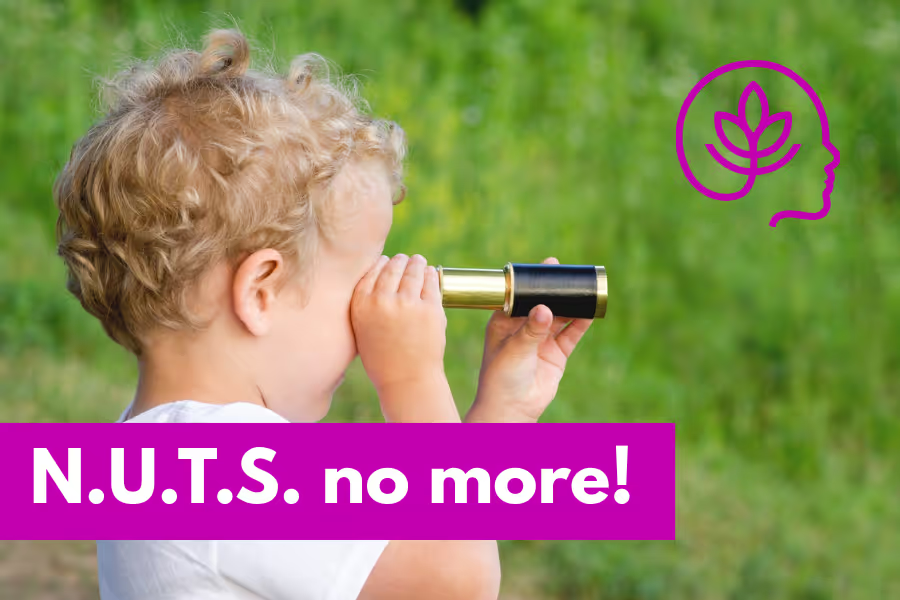Missed our previous instalment “N.U.T.S. with stress”? Read it here.
Why do we focus so intensively on stress and trauma at epiAge? Because poor neuro-mental health causes ageing to the core of our cells. In fact, trauma not only affects individual health but may, in extreme cases, epigenetically burden further generations.
++++
When does stress go through the roof for you?
The N.U.T.S model predicts that it is when we are confronted with the following four challenges: Novelty, Unpredictability, a Threat to the ego or a loss of our Sense of control.
So, even if we probably have little say about the source of our stress, we may be able to calibrate our reaction to it – with a little help. The Centre for Studies on Human Stress (CSHS) in Montreal, who designed the N.U.T.S. model, suggests a number of strategies to engage in more positive ways with daily stress, while emphasising that there are no universally valid cookie-cutter solutions.
The most convincing coping strategy from our perspective is the one the CSHS describes as a five-step plan: 1. “time out”, 2. “walk the dog”, 3. “identify the true source of stress”, 4. “a well-defined problem is a problem almost solved” (which we would describe as “discuss the stressful situation with a trusted person”) and “resilience” (or “define a plan B to buttress your resilience”).
And this is how it concretely unfolds:
1. TIME OUT: First, you consciously decide to take a break from the stressful situation at hand in order to gain perspective.
2. WALK THE DOG: Take enough time alone (if the suggested hour sounds too ambitious, anything upwards of 30 min. should already be helpful). Make sure you choose a centring pursuit such as walking, swimming or an undemanding craft or creative activity while avoiding distractions or stimulation. This will allow the dust to settle so your mind can come to rest.
3. IDENTIFY THE TRUE SOURCE OF STRESS: Using the grid we outlined in our first instalment, analyse the origin of your stress. Has life presented you with (too much) novelty or is the problem unpredictability? Alternately, are you dealing with a threat to your ego or is it a seeming loss of your sense of control? Remember, however: stress may have more than one source.
4. DISCUSS THE STRESSFUL SITUATION WITH A TRUSTED PERSON: Once you have identified the source(s) of your current stress, enrol someone matter of fact enough to ask the right questions and help you gain clarity and emotional distance.
5. DEFINE A PLAN B TO BUTTRESS YOUR RESILIENCE: Now that you have distanced yourself from the stressful situation, given yourself time to re-centre, identified the true source(s) of the stress and discussed the pattern at hand with a friend or a partner, you are ready for the final step: designing your plan B to regain at least a modicum of agency.
Indeed, depending on the source(s) of your predicament, you can work at approaching the novelty or unpredictability by developing new skills or strengthening existing ones as well as tapping into potentially unforeseen resources.
If it is your ego that feels threatened, you can pause to assess whether this is really true. If it is, you can then review your existing strengths and find new ways to deal with your weaknesses. Finally, if you are under the impression that you have little or no control over the situation, your sounding board person can help you determine whether you are as helpless as you think you are. Or to quote the words of the famous “Serenity Prayer”, they may help you to cultivate “the serenity to accept the things you cannot change, the courage to change the things you can, and the wisdom to know the difference.”
And even if your plan B is often not implemented, “[…] just the fact that you have an alternative sends a message to your brain that you have the situation under control, and you will stop producing stress hormones” (The University of Montreal and of human stress: Sonia Lupien, online).
++++
Sources and further reading
“Recipe for Stress”. Centre for Studies on Human Stress. Online: https://humanstress.ca/stress/understand-your-stress/sources-of-stress/
“Long-term stress management”. Centre for Studies on Human Stress. Online: https://humanstress.ca/stress/trick-your-stress/stress-management-quick-fixes/
Niebuhr, Reinhold. "The Serenity Prayer". Archdiocese of Saint Paul and Minneapolis. Online: https://www.archspm.org/the-serenity-prayer/
“The University of Montreal and of human stress: Sonia Lupien“. The University of Montreal and of the world. Université de Montréal. Online: https://www.umontreal.ca/en/the-university-of-montreal-and-of-the-world/sonia-lupien/
M Gabrielle Pagé, Lise Dassieu, Elise Develay, Mathieu Roy, Etienne Vachon-Presseau, Sonia Lupien, Pierre Rainville, PhD, "The Stressful Characteristics of Pain That Drive You NUTS: A Qualitative Exploration of a Stress Model to Understand the Chronic Pain Experience", Pain Medicine, Volume 22, Issue 5, May 2021, Pages1095–1108, doi:10.1093/pm/pnaa370. Online: https://academic.oup.com/painmedicine/article/22/5/1095/6034898
Illustration
QuakerGirl22/ pixabay & epiAge
 Back to all posts
Back to all posts